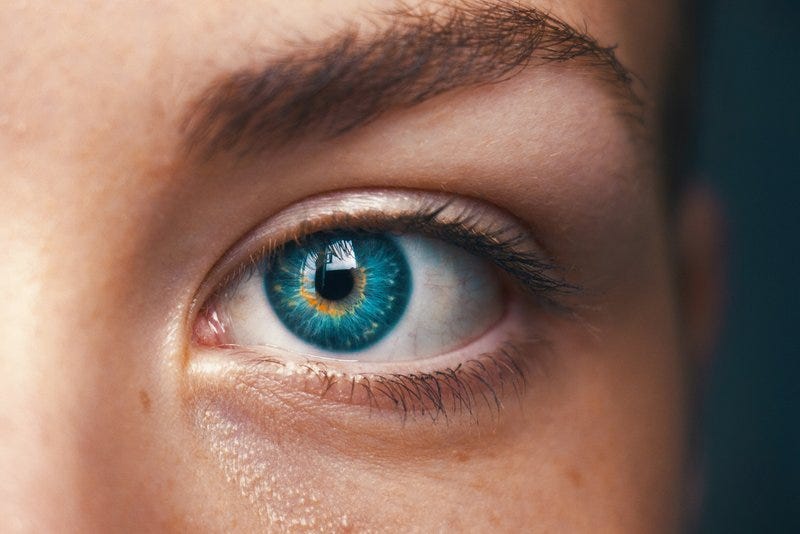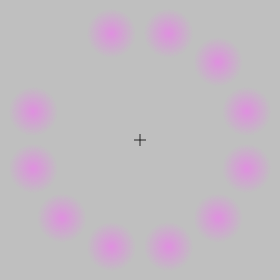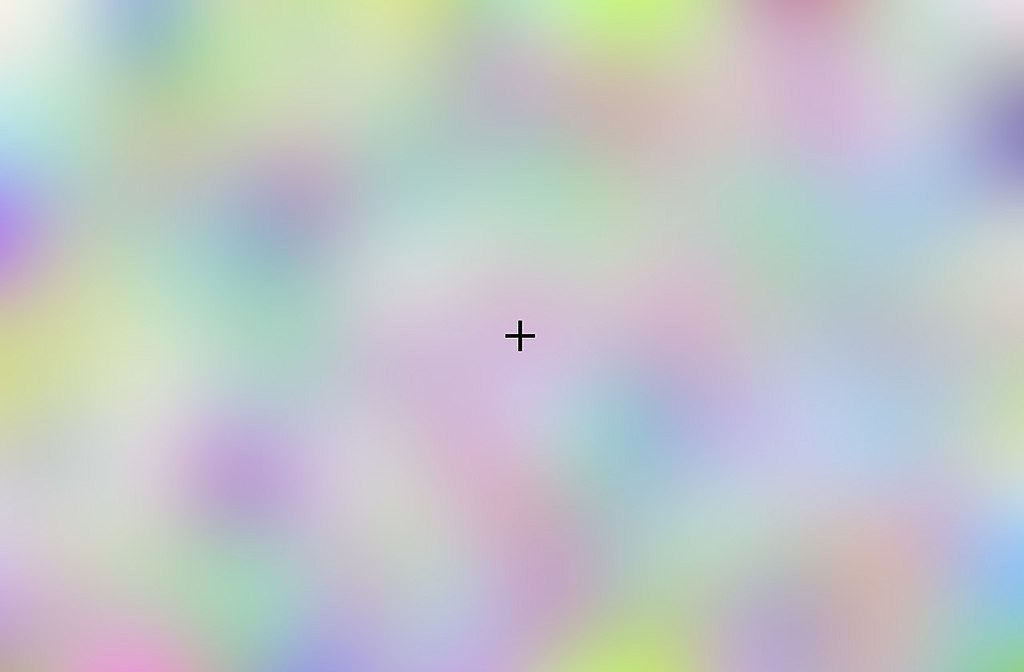Hello! This is Everything Is Amazing, a science newsletter about why clickbait is so clickable, why some islands are ludicrous places to linger, and why the fun should always be why.
There are a few hundred more of you than I was expecting, thanks to the kindness of
for including me in her roundup of writers who started from scratch on Substack. Cheers, Anna!(To any of you who came here in search of newsletter-writing advice, well, I’m afraid this is as close as you’ll get, or maybe this. Hope that helps/I’m so sorry.)
For today’s newsletter - well, forgive me. I’m currently and unexpectedly knocked sideways into a woozy mess by a change in my blood pressure medication, so I’m needing a few days for my body to catch up.
In the meantime, here’s a piece from way back in season 3 - which was about visual illusions - on the potential weirdness of your own reflection, which ties in with something else I’ll be writing soon…
And it starts with one of the most interesting, lovable and nightmarish creatures on our planet (delete as applicable to your tastes).
This is a tarsier, a primate from the islands of Southeast Asia.
Right now, you’re having Some Kind Of Reaction to that picture. Tarsiers are the Marmite of the primate world: either you find them unbearably cute or stomach-churningly creepy.
A tarsier is, by anyone’s definition, an unusual-looking creature. In the words of Ze Frank, “it disguises itself in the forest by pretending to be a small teddy bear undergoing a colonoscopy.”
You may find this adorable or horrifying.
But let’s stop making it all about you for a second, and turn to the actual facts.
Tarsier eyes are each as big as its brain. They’re so big that their skulls and their brains have developed in unusual ways to accommodate them (imagine humans with eyes like grapefruits - or even better, please don’t). The eyes of a tarsier take in an extraordinary amount of light - enough to see prey even in the dimmest conditions.
Basically, tarsiers see everything. Their eyesight is so good that there’s one of them watching you right now. At least one. Maybe more.
Also, their eyes don’t swivel. They’re locked in place. To look at you, a tarsier has to turn its head right at you and stare. Nothing personal. It’s not rudeness, it’s just how it’s built.
So let’s return to that Reaction you’re having.
Generally speaking, if something smaller than you is staring at you, it’s cute - babies, for example - and if it’s larger than you, it’s intimidating and even threatening. This certainly applies to the animal kingdom, except pretty much all non-human creatures interpret a stare as a challenge of some kind (for both these reasons, never trust a YouTube video with a title like “How To Outstare A Moose.”).
The same applies to humans too, more or less. To stare at another human being, even if it’s done without anything remotely creepy in mind, is to escalate the emotional intensity of your gaze - and if they see you doing it, it can land on the other person’s awareness like a ton of bricks. (I have it on good authority that this is something women have been trying to tell men for years.)
Only tarsiers get a totally free pass with staring. They know no other way.
This newsletter isn’t about tarsiers, though.
When I was a student in York, I used to play a trick on people in the street, using staring.
The rooftops of York are high affairs, and always worthy of a good stare. Always something interesting going on up there - architecturally, ornithologically, historically - if you just slow down and look. Take the above pic of Monk Bar, one of the historical gateways into the city, looking stupendously lovely in the late autumn light.
So my friends and I weaponised the interestingness of High York in the service of mischief.
Here’s how we did it. First, one of us wandered into the middle of the street in York’s busy pedestrianised centre, stopped suddenly, and theatrically looked upwards. “Woah. What is that?”
After a few seconds another of us wandering past, only to stop and stare upwards as well. “Bloody hell.” Point, point, excited jabbering at each other, certain amount of clutching forehead in alarm, some pacing up and down, always returning to stare upwards, jaw agape.
By now a few people had stopped. They were peering upwards as well. This was the dangerous time. They’re hooked, but they’re not yet using their brains properly. Any moment now, one of them will ask, What are we looking at? This is where our artistry came in, and our gambler’s instinct. You’re stretching the hoax out as long as you can, doing a runner a split-second before the game is up.
(This got a lot easier when some of us got mobile phones: you can fake doing a call to a friend, which creates an invisible please don’t interrupt me bubble around you, thus making their questioning impossible - and then of course you walk away before the “call” is finished.)
The aim of the game was to get the maximum number of complete strangers gawping upwards in one go. Achieve double-digits, and you are a proper legend.
This kind of thing is always popular with students, in that it’s small-mindedly hilarious, a touch mean-spirited, and a great distraction from doing anything even remotely useful with your day. For those reasons, it’ll always be a hit in academia.
But what this isn’t is original. It goes back at least to 1969, when researcher Stanley Milgram used groups of actors to hoodwink people into staring upwards in a street in New York. His unsurprising findings: as the number of actors increased, so did the number of passers-by who copied their behaviour.
More recently, Andrew Gallup did a similar experiment in Oxford, England - and as Ed Yong noted here, not only were there differences in staring between genders, there were also interesting patterns to be seen in where people weren’t looking. Maybe, as is so often the case with many creative pursuits, paying attention to what people aren’t doing is the way to discover the really good stuff.
Anyway. Fascinating. And a tragic indictment of my lack of commitment as a student!
Is this what today’s newsletter is about?
No.
But trust me. We’re really close now.
This is a lovely stock photo of someone with a really nice-looking eye. What a colour! (I hope it’s real.) The blue of the Mediterranean in the height of summer. A blue that almost makes you feel the hot sand between your toes.
I hope it makes you feel calm and relaxed, because you’re going to need it. What follows might freak you out no end.
This newsletter isn’t about animal-staring, the kind tarsiers excel at. It’s also not about everyday human-staring, the kind procrastinating students take great delight in tricking other people into doing.
No. There’s another kind - a radical version that can bend your brain in the strangest ways.
That’s what today’s newsletter is about.
At first glance, this looks like a very boring animated GIF. I’m presuming you’re seeing what I see: a ring of pink dots, each disappearing in turn to give the illusion of motion.
But try staring at the cross in the centre, without blinking or moving your eyes, for about 30 seconds.
You’ll know when you’ve done it long enough: you’ll hear yourself say What the…???
Yes, all the dots disappeared. And that illusory moving circle turned green. And then you moved your eyes, and everything sprung back into what it was before, into what it actually is.
Want another one? OK.
Try doing the same with this image.
Wild, right?
It’s known as Troxler’s Fading, after the Swiss physician Ignaz Paul Vital Troxler who recorded it in Vienna in 1804 (although credit should actually rest with English natural philosopher Erasmus Darwin, grandfather of Charles, who recorded it a decade earlier.) What’s happening here is still being debated, but in essence, it seems the neurons in the retinas of our eyes work like the ones in our brains: they tune out & ignore anything that doesn’t seem important.
And by important, I mean noisy. Or the visual equivalent. The things that are high-contrast, brightly coloured, and above all, in apparent motion. Movement is the great attention-grabber in our visual systems.
This isn’t to say that the thing we’re looking at has to be moving. It can be absolutely still and we can still see it - which is why we don’t blunder into parked cars and brick walls when we’re out for a walk, why distant mountains have a very reassuring habit of not vanishing, and why the world isn’t a hallucinogenic dream of things fading in and out of your vision like those pink dots did.
The key here is the kind of staring you’ve been doing. You’re not a tarsier (I’m presuming), so your eyes can dart left and right without you needing to turn your head. This allows for a looser, more relaxed kind of staring, where your eyes are making tiny, involuntary saccades, exactly like when we’re reading something, as I explained previously.
With every saccade, even the tiniest one, you’re rotating your eye so the incoming light lands on a different set of receptors in your retina. You’re not giving each of them enough time to grow “bored” with the unchanging view - or rather, to de-prioritise anything in your visual attention, so Troxler’s Fading starts kicking in…
But if you fix your gaze on a single point and stare without moving your eyes or moving your head (which is incredibly hard), and you stare at it for long enough…
OK. Here’s a wee health warning.
None of this is technically dangerous, or else I wouldn’t be writing about it publicly, and neither would all the reputable sources I’ve been reading on this topic. In all recorded cases, it’s a safe way to alter your consciousness.
But when journalist Jenni Avins (see below) describes this kind of staring as “like tripping without the drugs,” she’s not kidding.
I hope that’s you warned.
Every world culture knows about the dangers of mirrors. A still pool of water, a facet of natural glass, a highly-polished metal plate or shield - anything that can throw your reflection back at you will inspire thoughts of other worlds, glimpses of things that should never be glimpsed, and Evil stalking the Real that only a mirror can reveal. Cue the origins of thousands of stories across every world culture.
Now it seems some of this is grounded in scientific fact.
In 2010, psychologist Giovanni Caputo of Italy’s University of Urbino published the results of an experiment he ran on 50 individuals between the ages of 21 and 29 years old. Participants sat in front of a large mirror in a quiet, dimly-lit room, and stared fixedly at their own reflection without moving their eyes.
In every case, it didn’t take long for some really crazy sh*t to make an appearance:
At the end of a 10 min session of mirror gazing, the participant was asked to write what he or she saw in the mirror. The descriptions differed greatly across individuals and included: (a) huge deformations of one's own face (reported by 66% of the fifty participants); (b) a parent's face with traits changed (18%), of whom 8% were still alive and 10% were deceased; (c) an unknown person (28%); (d) an archetypal face, such as that of an old woman, a child, or a portrait of an ancestor (28%); (e) an animal face such as that of a cat, pig, or lion (18%); (f) fantastical and monstrous beings (48%).
Caputo recently followed this up with a 2019 study of 90 participants that included 15 portrait artists. This time, the focus on their gaze wasn’t their own reflection but the face of a stranger sat opposite them. And what they saw was as wild as before. (Check out some of the sketches at Scientific American here.)
Staring into your own eyes is one thing - better the devil you know, and all that. But consensually gazing into a stranger’s eyes is another. It’s always an overwhelming emotional act.
If you’re up for having your heart ripped out today, here’s artist Marina Abramović’s endurance-based 2010 performance “The Artist Is Present” at the Museum of Modern Art in New York, where she sat in a chair and stared into the eyes of strangers.
This is what happened when her former lover Ulay, whom she hadn’t seen in twenty years, sat down in front of her:
Journalist Jenni Avins tried something similar in 2015 (“I just took a brief hallucination break with a colleague”) and wrote it up for Quartz:
"Then she told me why she laughed halfway through our sitting. “You started to look like a weird little animal!” she said.
“YOU started to look like an animal!” I shrieked. “A lion!”
“You were a lion!” she yelled. “A lioness,” she corrected herself.”
What’s going on here?
The simplest theory seems to be around how our minds react to Troxler’s Fading. When our retinas start tuning out huge chunks of reality in front of us, all levels of our consciousness are equally flummoxed. But we’re designed to adapt quickly, and on some level we know that nothing has really disappeared here…
So we fill in the gaps with whatever might fit. Our imagination. Our memories. Our hopes and fears. That crazy scene in that film we saw the other week. That cute/horrifying primate we saw on YouTube with the absolutely massive eyes…
Extreme staring, it turns out, can be as much a gateway to our subconscious as the psychedelics-based psychotherapy that environmental journalist Michael Pollan has been writing about recently. Employed in the right way, could it be a way to tap into deeper wells of creativity and problem-solving insights? And perhaps, as an enlightening deep-dive into self-awareness, it holds similar potential for relieving mental suffering, including depression, anxiety, and addiction?
One thing that is clear about our most popular form of staring: as just reported by the Guardian, staring fixedly at screens is causing an "epidemic of myopia” (short-sightedness), according to the American Academy of Optometry and American Academy of Ophthalmology. Maybe you’re not in danger of hallucinating there, but it’s doing far worse things to your health.
An easy way to ease the pressure: go outside, or stare out of a window, and fix your eyes on something near the horizon, so your eye muscles get stretched the other way. Then allow them to completely unfocus and relax. Do this at least once an hour.
Here’s a tarsier demonstrating correct form:
Happy looking! (Just don’t look too hard, please?)
Thanks for reading.
- M
Images: Jeremy Hinton/Wikipedia; Bautsch/Wikipedia; Amanda Dalbjorn; Inga Gezalian









'So we fill in the gaps with whatever might fit. Our imagination. Our memories. ..' My mother had Macular Degeneration and part of that was Charles Bonnet Syndrome. If she looked at something and couldn't see it properly, her brain supplied her with a visual from its nearly 90 year old catalogue. Some of them were so odd - for exapmple, looking at the river and she would see men's ties.
In the beginning, she thought she was going mad but once the syndrome was explained, she would laugh at what her brain was supplying. I think in truth, she was also grateful that her brain could still DO things like that!
"Basically, tarsiers see everything. Their eyesight is so good that there’s one of them watching you right now. At least one. Maybe more."
Is it terribly weird that your intro on tarsiers might be one of my most favorite things you've ever written? Thank you for so many delightful lines that all had me almost spitting my tea out 🙌 🙌